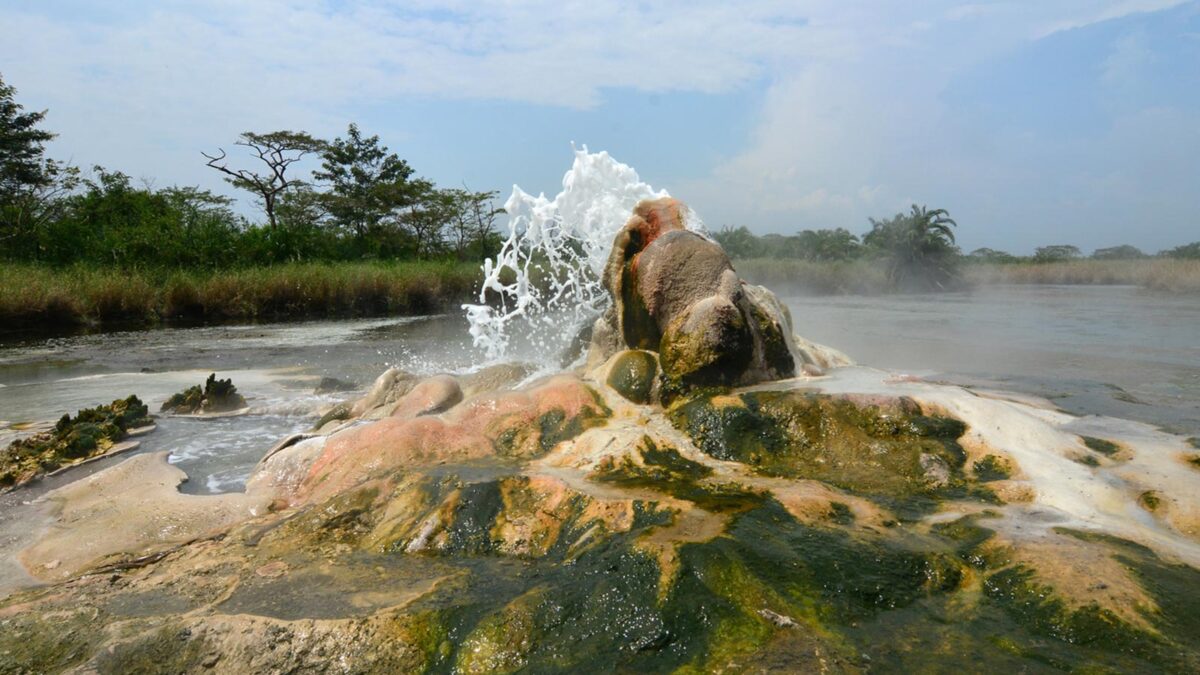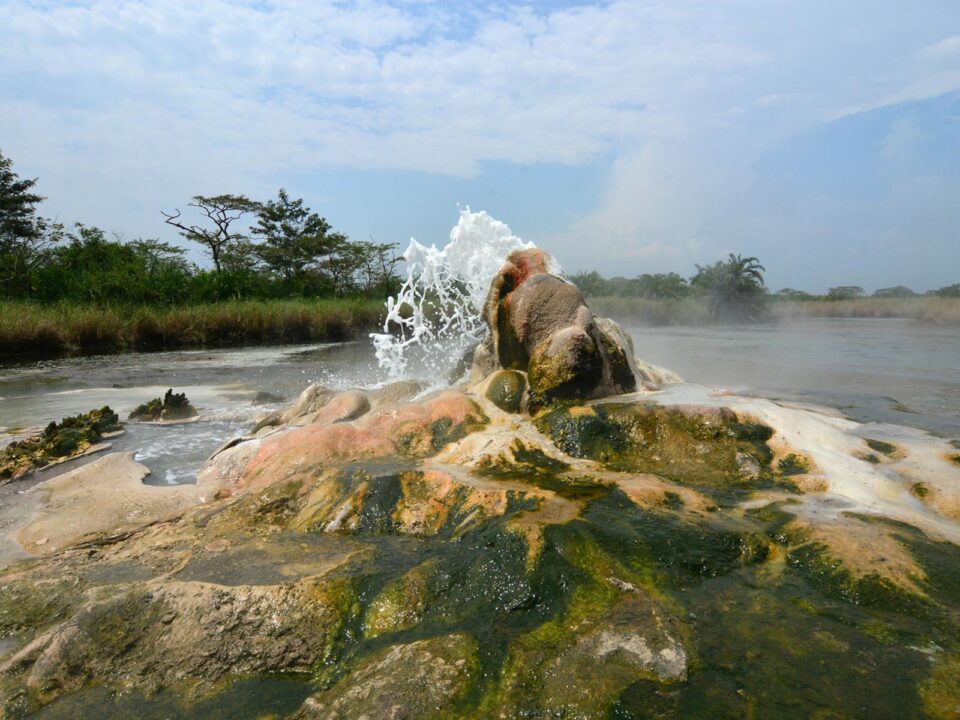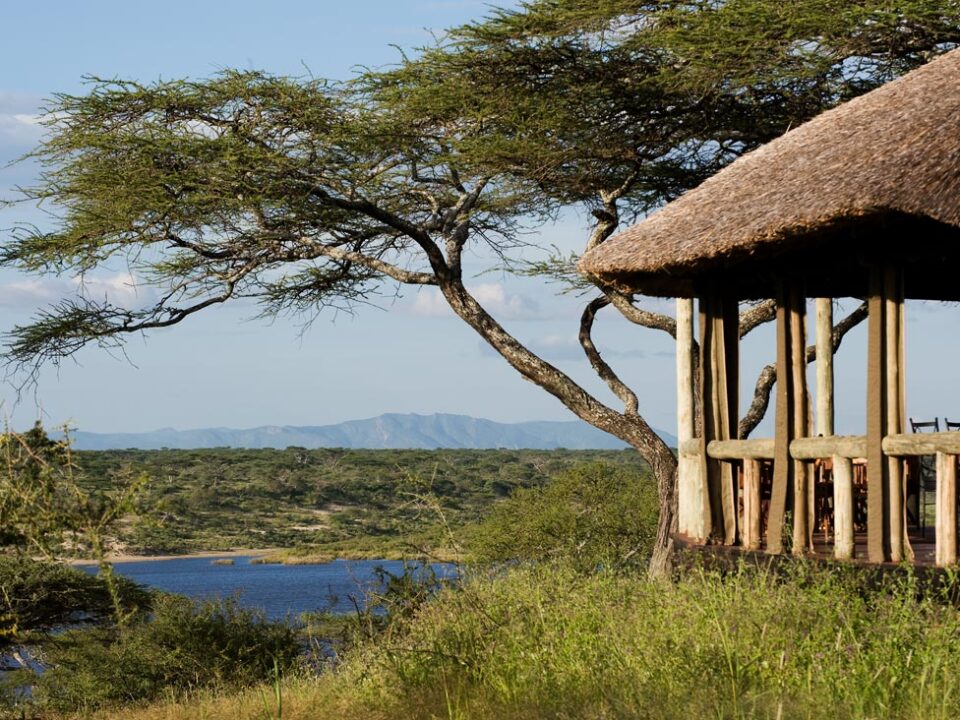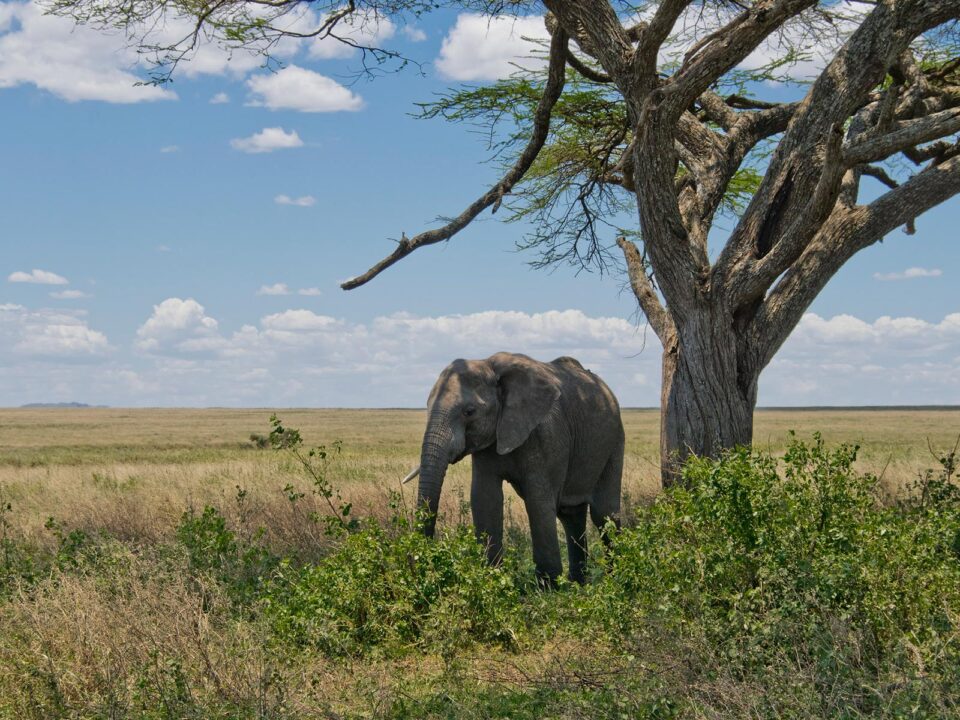How to Get to Semuliki National Park

Gorilla Tracking Tours from Katuna Boarder Rwanda
September 6, 2023
Gorilla Tracking Tours from Cyanika Boarder Rwanda
September 6, 2023How to Get to Semuliki National Park – The Gateway to Sempaya Hot Springs
Semuliki National Park, nestled in the southwestern corner of Uganda within Budibugyo district, offers an enchanting experience for nature enthusiasts. To reach this pristine paradise, accessible by road, especially when departing from Kampala, Uganda’s capital, there are two recommended routes. It’s advisable to utilize 4WD vehicles for both routes:
Route 1: Kampala-Fort Portal via Masaka, Mbarara, and Kasese
This scenic journey spans approximately 465 kilometers and takes between 7 and 8 hours to complete. While this route may be longer, it offers the opportunity to explore other attractions along the way, including Queen Elizabeth National Park, Lake Mburo National Park and more.
Route 2: Kampala-Fort Portal via Mubende
For those seeking a shorter drive, this route covers about 180 kilometers and typically takes 4 to 5 hours to reach Fort Portal. It’s a more direct path, allowing you to reach Semuliki National Park more swiftly.
Navigating Semuliki National Park
Upon arriving at Fort Portal, situated about 59 kilometers from Semuliki National Park, the journey continues along a bumpy road that takes approximately 2 to 3 hours to reach the Sempaya Gate. Along this route, you’ll be treated to stunning sights of the Rwenzori ranges, sweeping views of the Albertine Rift valley, and, during the rainy season, some challenging road conditions. Currently, efforts are underway to widen and improve the road, ensuring smoother transportation for visitors.
Immerse Yourself in Semuliki National Park’s Activities
Bird Watching
Semuliki National Park is a haven for birdwatchers, rewarding tourists with sightings of captivating forest and swamp bird species. Among the highlights are the elusive shoebill stork and the Swamp Palm Bulbul, predominantly found around Lake Albert. Other avian treasures include the Lemon-bellied Crombec, Black Dwarf Hornbill, African Piculet, Chestnut-breasted Negrofinch, Red-billed Dwarf Hornbills, Blue-billed Malimbe, Maxwell’s Black Weaver, White-crested Hornbill, Yellow-throated Nicator, White-throated Blue Swallow, Red-rumped Tinkerbird, Yellow-throated Cuckoo, Red-bellied Malimbe, Nkulengu Rail, Black-casqued Wattled Hornbill, Piping Hornbill, Leaf-love, Crested Malimbe, the Ross’s Turaco, and Orange-cheeked Waxbill, among others. Ntandi and Sempaya are particularly renowned for birdwatching. Additionally, Kirumia River offers an intriguing birding spot.
Nature Walks and Hiking
For those who love to explore on foot, Semuliki National Park boasts a range of nature walks and hiking trails that allow visitors to get up close and personal with the park’s diverse wildlife. These activities provide opportunities to observe primates, hippos, crocodiles, birds, and butterflies. There are three main hiking trails within the park: the 8-kilometer Sempaya Nature Trail, the 11-kilometer Red-Monkey Track along the eastern margin, and the 13-kilometer Kirumia Hiking Trail, which passes through the heart of Semuliki Forest and stretches toward the Semuliki River.
Cultural Encounters
While Semuliki National Park is rich in natural beauty, it also offers fascinating cultural encounters. Among the most captivating is a meeting with the Batwa people, who reside within Semuliki Forest. These hunter-gatherers once relied entirely on the forest for sustenance, shelter, firewood, and medicine until it was gazetted as a forest reserve in 1932 and later designated as a National Park in 1993. With the rise of tourism, their way of life shifted from the forest to cultural displays of their ancient traditions, including dances, music, and drama.
Another enthralling cultural encounter awaits with a visit to the Bambuti pygmies, who inhabit the banks of the Semuliki River. These pygmies are close relatives of the Basu pygmies in the Democratic Republic of Congo, although some believe they share ties with the Batwa near Mgahinga Gorilla National Park and Bwindi Impenetrable National Park. Despite their smaller population compared to the Batwa Pygmies, the Bambuti have unique activities, such as the cultivation and smoking of marijuana. Both the Bambuti and Batwa share the common history of once residing in forests as hunter-gatherers before being evicted from their ancestral homes.
A Must-Do: Visit the Sempaya Hot Springs
The Sempaya Hot Springs take center stage as the most popular activity within Semuliki National Park, making it a must-do for all visitors. There are two hot springs to explore: the Male hot spring, known as Bitende, boasting a diameter of approximately 12 meters, and the Female hot spring, Nyasimbi. The Female hot spring is a boiling geyser that propels scalding water and steam about 2 meters into the air. The water temperature can reach a boiling 100 degrees Celsius, and it can cook eggs within 5 to 10 minutes. What captivates tourists isn’t just the scientific marvel of these hot springs but also the cultural and legendary tales that surround them. During your visit, be prepared to be immersed in the rich cultural significance of these springs, all while keeping an eye out for the park’s diverse mammals, including primates and birds.




